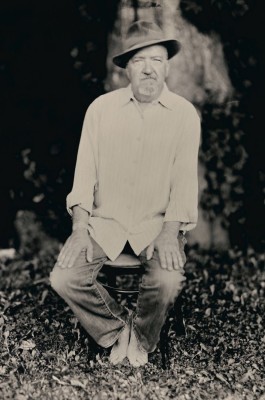© 2016 Article and Photographs by Frank Matheis
In the summer of 2016, the insanity theater unfolded: at the tumultuous political convention politicians raged; innocent people were being shot by the police almost weekly; and, policemen, who were not to blame, were being assassinated by retaliatory madmen. Terrorist attacks were taking place worldwide. What could be the best respite from this existentialist reality? Blues summer camp for adults, of course. Call it Escapism 101 from the bleak daily news into the blues, for 150 music lovers of all ages. Weary student-musicians packed their guitars, harmonicas, ukuleles, mandolins, banjos, basses, fiddles and more, shut off their depressing news sources, and went off to the oldest formal summer school for the blues in the United States. They came from all over the US, and as far away as Vancouver, Canada, Hawaii, Ireland and France, to descended upon Blues & Swing Week at the Augusta Heritage Center, the annual workshop at Elkins-Davis College in Elkins, West Virginia. Augusta is in Georgia, right? So why is it called “Augusta Heritage Center?” The program’s website explains, “Augusta was the historic name of West Virginia in its period of earliest settlement. In 1973, “Augusta Heritage Arts Workshops” was the name given to a summer program that was set up to help preserve the Appalachian heritage and traditions. Augusta Heritage Center is known nationally and internationally for its activities relating to traditional folklife and folk arts of many regions and cultures.”
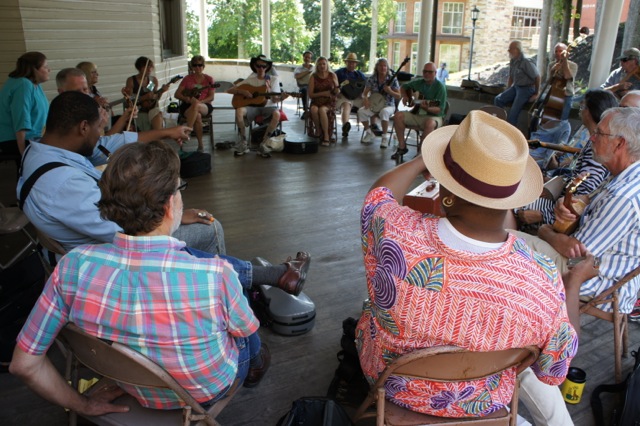
All that translates to pure, unadulterated fun and good-times: Students jamming with their teachers, including world renowned blues virtuosos, until the wee hours of the morning; exuberant dancing and singing, and a joyful spirit of harmony, musically and personally. More fun can hardly be packed into a week, and all that without free flowing liquid libations or drugs. It’s the liberation from the daily blues through the blues, comprised of lectures, classrooms courses, jams, concerts, student showcases and more, all packed into a single week.
Beth King, the Director of the Augusta Heritage Center, stated, “Over the course of the six weeks of programming the goal is to preserve the traditional arts featuring a variety of genres, not just Appalachian, but a wide cross section of the arts, in a wide spectrum of folklore, arts and music. The local community interacts with the program, which started here in this community with some people here who were involved since the very beginning. So much of the community comes to campus interacts with the people who come from all over the US and the world. It’s an open and friendly community. Last year we had seven foreign countries and 49 states represented. Over the six weeks we have around 800 students. Our vision is to support the traditional art with a broad a base as we can, that means to bring in more participants and to grow the family. The new direction for Blues Week is to get more traditional and acoustic. The Augusta family has an important multi-generational aspect, a caring community, the inclusiveness of the program is important to us, to be able for young and old to work with professionals. To me the energy the blues teacher have brought is amazing. Those people have it all. They relate to people and they are very good teacher. Our students have been thrilled and charged by Jerron Paxton, Marcus Cartwright, Phil and all the people he brought. Whether you are a new learner or experienced musician…we welcome everyone in this nurturing experience. Don’t be timid or hesitant about how good you are. You have a place here…” Augusta Weeks include Irish, Cajun/Creole, Bluegrass, Old Time Country and more.
(The most common adjective heard by the students, dancers and music teachers to describe the week was “magical” – and this writer could not find a more appropriate term. It is hard to create journalistic distance when the writer himself had some of the most fun ever packed into a week.)
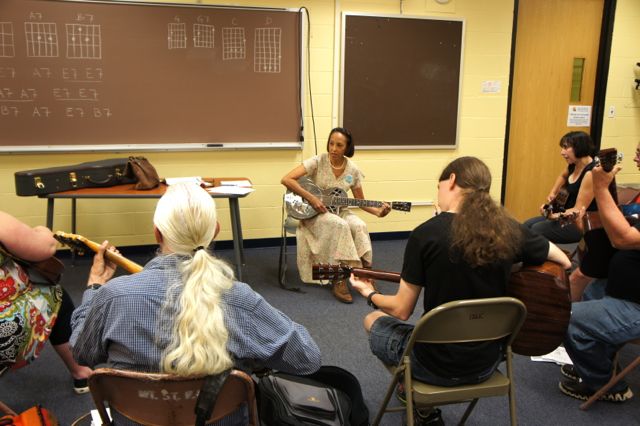
A storied history – a bright future
The program was started by Margo Blevin Denton and in 1983 musician/folklorist Joan Fenton integrated blues, an important regional music genre in the Piedmont and Appalachian region, into the program. That was the first summer workshop in the United States to focus on blues music, folklore, craft and dance. The first blues teachers came from the nearby “Piedmont” acoustic scene in Washington, D.C. – John Jackson, John Cephas and Phil Wiggins. The 2016 Blues and Swing Week continues the tradition of bringing together kindred spirits for a week of musical sanctuary in the scenic Monongahlea National Forest in the High Allegheny Mountains.
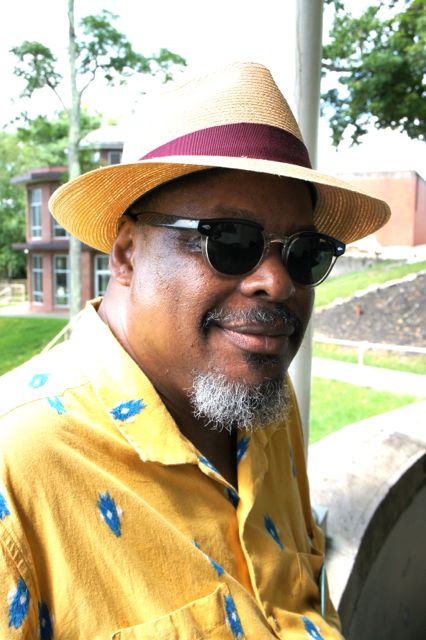
Wrapped in a blanket of self-imposed bliss, students and teachers again set upon this quaint small mountain college to learn and play blues, from and with master musicians, for equal parts music, fun, peace and fellowship. The event coordinator, internationally renowned harmonica ace Phil Wiggins, was called back to the program by one of the original founders, Joan Fenton, to resuscitate the Blues program that has lost ground over the years to similar summer schools. His counterpart, Wendi Bourne, organized the Swing portion of the program, and both worked closely together to create a beautiful event of music lessons, jams, dances and performances by teachers and students.
Nowadays, potential students have a wide array of choices for summer programs offering blues related music instruction: the Centrum Port Townsend Acoustic Blues workshop in Washington State, the Swannanoa gathering in North Carolina and Jorma & Vanessa Kaukonen’s Fur Peace Ranch in southeast Ohio, to name just a few. The Augusta program in some ways had seen a decline. Both Fenton and Wiggins were called back after long absences with the mission of bringing the music camp back to the roots of traditional blues.
Joan Fenton reminisces
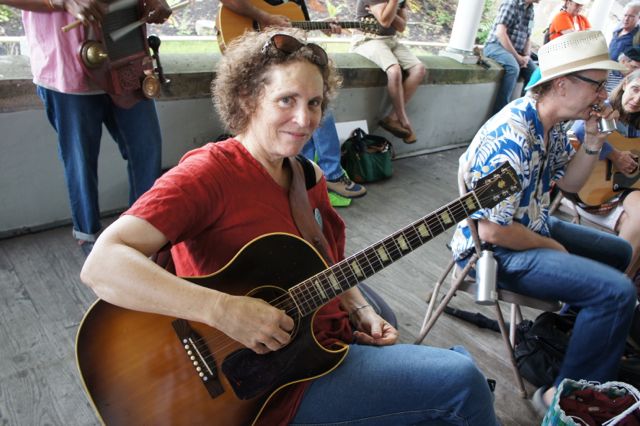
Musican and folklorist Joan Fenton recalls how Blues Week got started: “The first one was in 1983. Margo Blevin was the director of Augusta. She had decided that she wanted to hire Sparky Rucker, one of the instructors. I decided I definitely wanted to hire John Jackson. And we decided we wanted a harmonica teacher, and neither of us knew a harmonica teacher, believe it or not, so somebody – it could have been John Jackson, but I don’t know who, recommended that we hire Phil. So we hired Phil for the first year. In the first year we had 15 students, and Sparky Rucker got stuck in Customs, didn’t get here till Tuesday. John Jackson was late – didn’t get here until Monday – so it was only Phil and me when it started. So he had the harmonica students and I had all the guitar students for the first day and it was wonderful, just very exciting, very delightful. Everybody was thrilled with the program. We had somebody from Switzerland who came; and somebody from Singapore. Phil is somebody who I hired every year that I was coordinator to be on the program. He said to me that year, when we were talking about doing it again, he said, “I play with this guitar player, John Cephas, and I’d like you to consider hiring him.” I believe I had heard john play with Big Chief Ellis, so I was familiar with him – so the second year we hired John Cephas – and we also hired a woman by the name of Maureen Delgrosso to teach piano. So the program just started growing and growing and growing. And Phil just became an institution here, as did John.”
Phil Wiggins Returns
Harmonica master Phil Wiggins has spent more than 40 years playing the blues, including more than three decades in the highly successful guitar-harmonica duo Cephas & Wiggins. He has played and performed in North and South America, Europe, Asia, Africa and Australia, performed at the White House for two presidents and has won three of the prestigious Blues Foundation W.C. Handy awards. Widely considered to be among the best on the little instrument, a true “harmonica player’s harmonica player,” he has virtuosic skills that are simply unmatched. In 2016 he was again nominated by Living Blues as one of the top harp-players. He has played with more musicians than can into a short article, but to name a few: Esther Mae Scott, Flora Molton, John Jackson, Ed Morris, John Cephas, Johnny Shines, Robert Lockwood, Wilbert “Big Chief” Ellis, Sunnyland Slim, Henry Townsend, Honeyboy Edwards, Lonnie Pitchford, Nat Reese and many more. Most recently he has fronted his own ensemble, The Chesapeake Sheiks and he frequently appears with Eleanor Ellis and Rick Franklin.
Pure, unadulterated fun
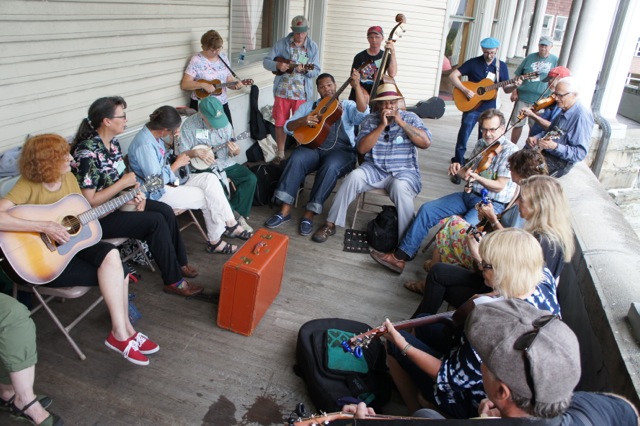
Some people outside of the genre might imagine summer blues camp to be a bunch of boring old folks sitting around a circle learning how to play sad songs. In actually, it was more fun than should be allowed, with a wide range of folks of all ages and interests having a real good time, not just of fellowship and camaraderie, but with great music all around them. People of all musical skill levels, from rank neophyte to advanced players, took classes in the mornings with some of the finest practitioners in the acoustic blues and played music until the crack of dawn. The teachers were all renowned, famous players who are well established in the acoustic blues, including some real virtuosos, world-class players. No wonder so many students have returned year after year for decades, like Rita Perkins, a retiree from the Twin-Cities are of Minnesota. She has participated for 10 years, initially taking courses with the great John Cephas. “Back the I was way in over my head, just trying to figure out what was going on. I also took courses with Joan Fenton. I was just beginning to love the blues. Some friends had come before and my friend Cathy inspired me and I joined her at Blues Camp.” Now, in 2016, she played her Martin guitar with exquisite skill and considerable joy.
Reviving the convergence of dance and acoustic blues
Coordinator Phil Wiggins sought to unite the acoustic blues & dance with the original spirit of the music program by again bringing in African-American traditional blues musicians, this time with a troupe of dancers, in the heritage of the black community of the Piedmont and Appalachian region. His vision was to foster the give and take process, the interaction of students and teachers, and for dancers to partake in the process and for musicians and dancers to inspire each other. “Blues music is dance music and dance is a musical expression of the complex history of the acoustic blues,” said Junious Brickhouse, the dance coordinator of Blues Week and the founder and executive director of Urban Artistry, a Washington, D.C./Maryland based non-profit organization dedicated to the performance and preservation of art forms inspired by the urban experience. Brickhouse brought along a troupe of young Urban Artistry dancers to the event, and invited special guests, such as the renowned dance teacher Moncell Durden and the famous buck dancer Williette Hinton from North Carolina, son of Algia Mae Hinton. Hinton and Wiggins have collaborated before, as Wiggins has been integrating dance in most of his recent projects, including with Junious Brickhouse, Baakari Wilder and Williette Hinton.
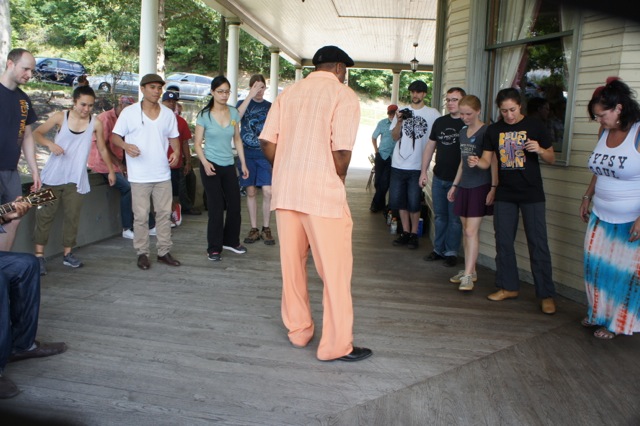
Expert dance instructors Durden and Brickhouse led the team of young Urban Artistry dancers and the dance students in the class to create a beautiful scene of physical expression. The spirited and skilled dancers inspired participants to join in and transfixed the event into a joyful occasion. The dancers were especially fired up when they were joined as teacher and dance partner by Hinton, who they all admired and felt inspired by as one of the living-greats in the art form. Hinton led everyone on the pavilion dance floor in an unforgettable night of joyful dancing.
Backing the dancers
Phil Wiggins said, “To make a workshop like this work, you need to bring in musicians who you know are of generous spirit”, so he brought along some of his musical soulmates to help teach and jam. Some of the teachers had double-duty. In addition to their daily teaching assignments and the general jam sessions they backed the dance classes and event. For that, Phil needed hardcore players, the “generous spirit” type of musicians who can’t stop playing, even after the gig is over. That magical core musical ensemble of people who love to play from the minute they wake up until the wee hours of the morning, “the core band” for the dances was the explosive country blues trio of Phil Wiggins on harmonica, multi-instrumentalist Jerron Paxton on guitar, banjo, fiddle and more, and the 22-year old blues sensation Marcus Lamont Cartwright, a guitarist from Louisiana. They were steadily present at seemingly every jam and dance performing all day long until late into the next morning with such unbridled joy of playing that they literally ignited the dancers. North Carolina multi-instrumentalist Mike “Lightning” Wells joined Phil and Jerron for a dance on the main Pavillion of Elkins Davis College.
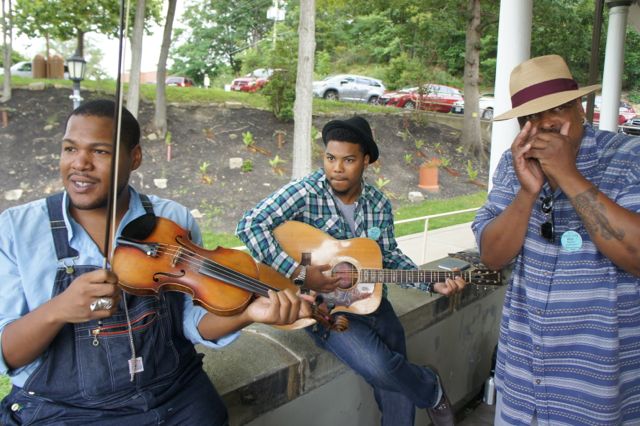
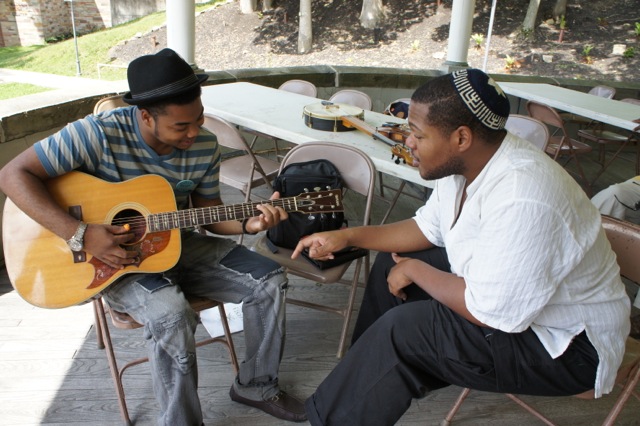
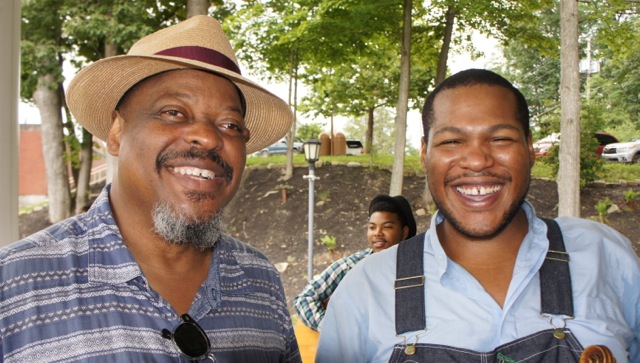
Multiple blues award winner Jerron Paxton, a sheer musical genius, has an almost insatiable hunger for playing, and the only guy that could possible keep up with him in the euphoric compulsion to play was the brilliant young Marcus Cartwright. With Phil at the helm as senior musician, they formed a powerhouse acoustic blues trio of such enormous combined skill and musical exuberance, it was infectious and history making. Jerron Paxton is not just one of the most talented roots & blues musicians of our time, he is a witty Master of Ceremonies, who added a dimension of off-the-wall humor to the instructor performance. He said, among other funny quips, “We want to teach you how to play together nicely. Music goes good with everything. It’s kind of like salt. (Long pause. The audience is searching for meaning. Salt? What? Until he finally closed the deal with)…It’s all a matter of proportion!” It took a while for the bard’s sharp wit to sink in until the auditorium of student and teachers finally got the point, and Jerron just got started from there throwing out his many funny ditties. Paxton can play anything from deep roots Appalachian mountain music on fiddle and banjo to deep roots blues. He taught String Band/Jug Band performance and he played, and played and played.
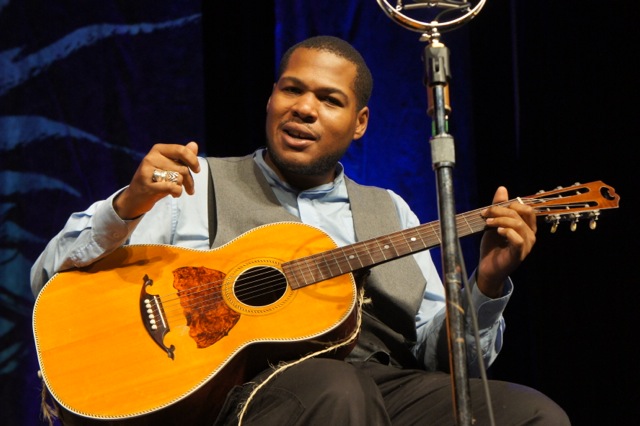
A superb lineup of teachers
Phil picked them for a combination of reasons, great virtuosic and teaching skills, a true connection to the African American traditions and respect for that culture, and, most importantly, really nice, fun to be with people.
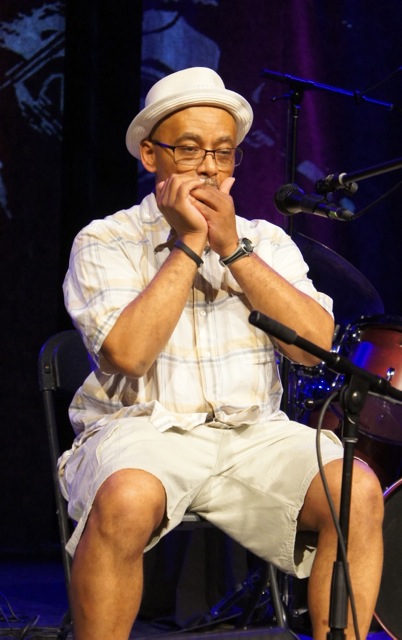
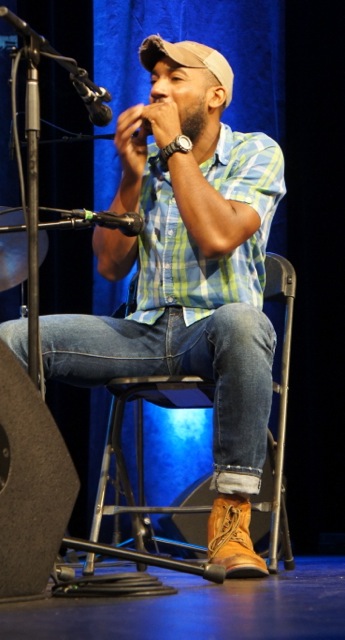
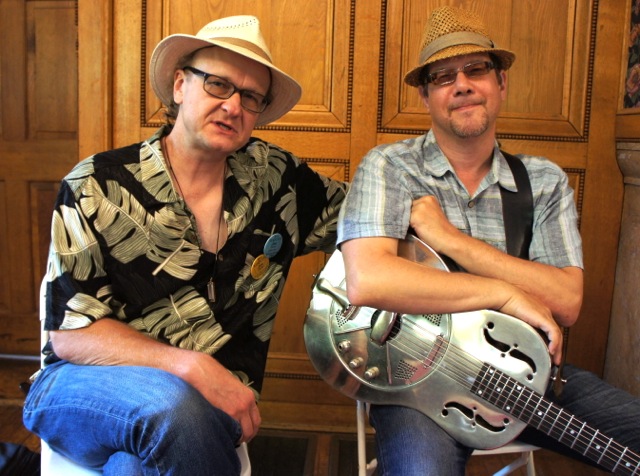
His partner Eric Noden taught fingerstyle slide guitar and was active supporting the late night jams until the wee hours. He is a highly versatile and skilled player with a huge repertoire who delighted students and fellow pros with his generous spirit and considerable guitar and singing skills. He also taught an important class in Grooves for Blues Guitar and Harmonica.
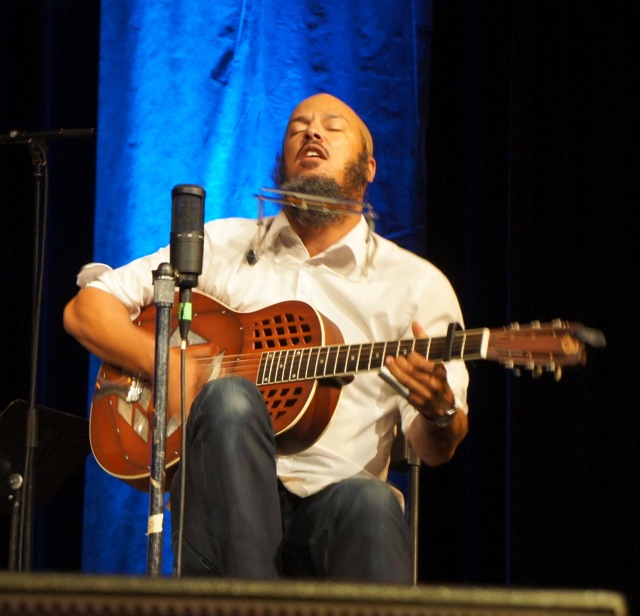
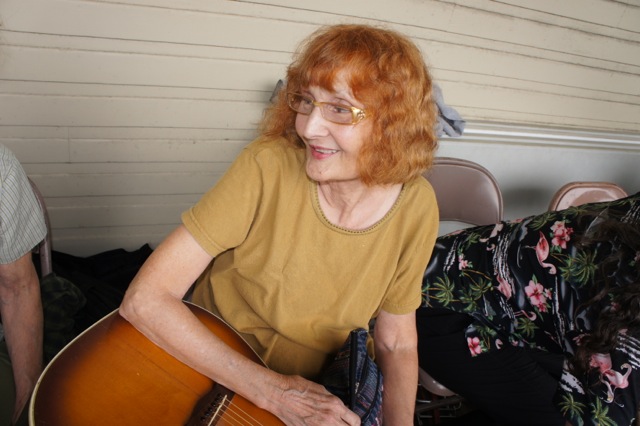
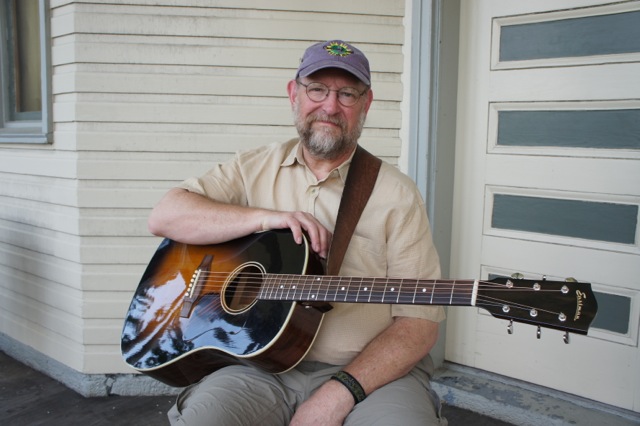
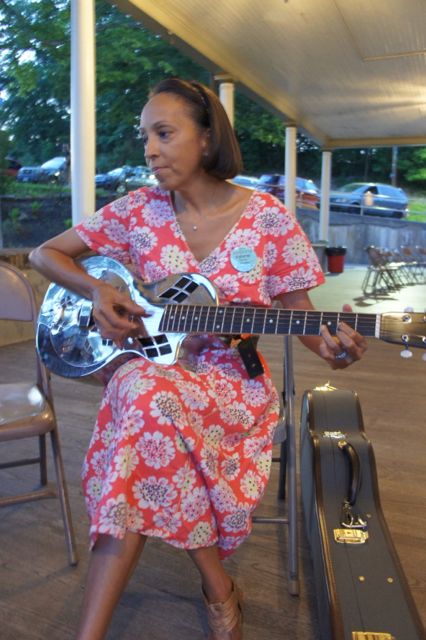
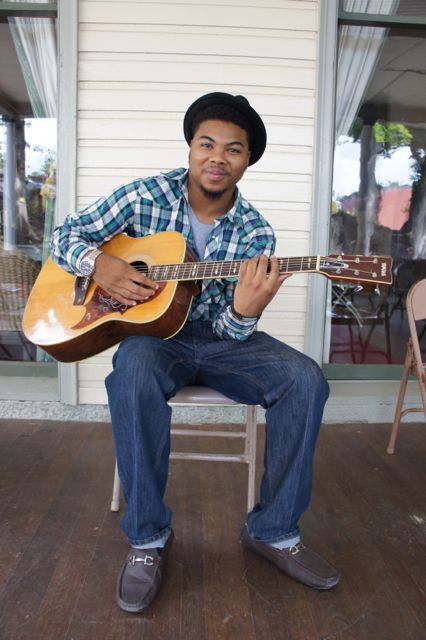
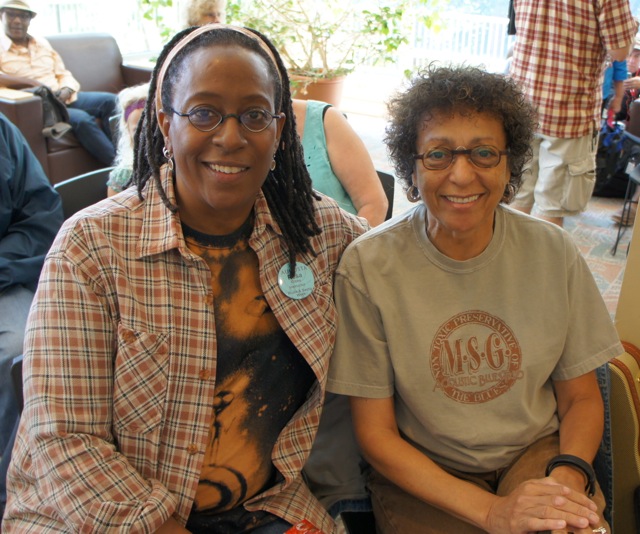
With Jackie Merritt and Miles Spicer. She taught Blues Vocal Repertoire and Blues Vocal Tech Performance. Then, she appeared several times to sing to the students, and literally brought tears to the eyes of this writer and many in the audience. Her soulful style, rooted equally in spirituals, gospel and blues, carries such heartfelt emotive beauty that she could melt a cold, cold heart. What an amazing singer and delightful person. Here she is with her partner Jackie Merritt, who accompanied Resa and others during the camp, on bones, harmonica and more.
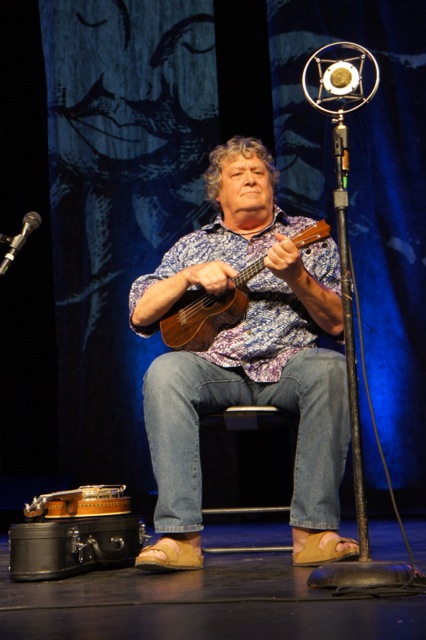
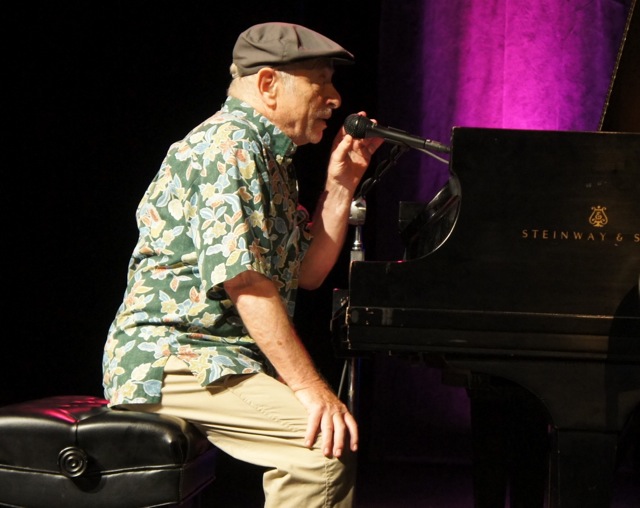
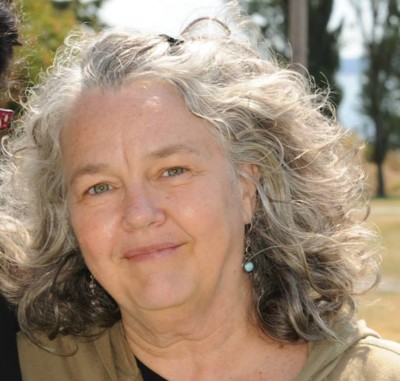
Photo courtesy of Augusta Heritage Center.
The Urban Artistry Dancers
Phil Wiggins’ current effort is to reunite dance with acoustic blues and this collaboration had connected him with Junious Brickhouse, the founder and executive director of Urban Artistry. The Urban Artistry Dance Academy, located in Silver Spring, Maryland, a suburb of Washington, D.C., describes their mission as “…provides an interdisciplinary urban dance education with a global perspective. Students are encouraged to become active participants and thought leaders in their respective communities, where they are not limited to mainstream trends but strive to become advocates of cultural preservation and artistic innovation.” Brickhouse, whose troupe now bridges the gamut of the Africa American dance experience from contemporary urban hip-hop to the traditional acoustic blues roots, invited special guests Moncell Durden, Rebecca Conley and Abigail Browning to Augusta Blues Week. His remarkable team of young dancers ignited Blues Week.
Hawnnah George Wheeler, Maren Cummings, Jade Ballard, Ryan Webb and Michael Esmeralda were a steady presence and they danced with such grace, beauty and joy to the old blues and roots music that anyone in their presence was filled with happiness and joy. It was almost indescribably fun, where this writer would have to reach for descriptive adjectives and none would seemingly do justice to the truly euphoric stat of happiness these young people brought to the event.
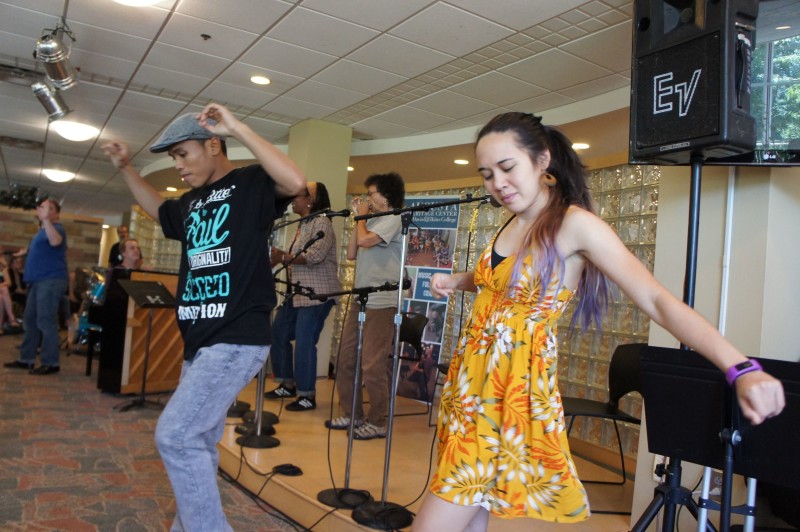

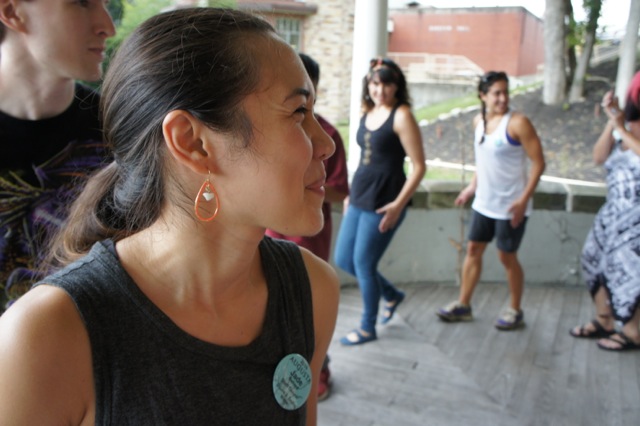
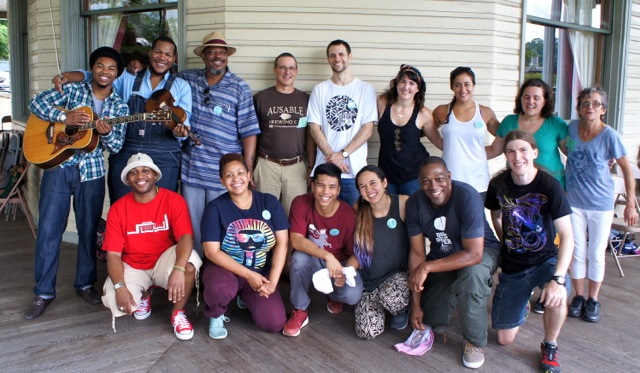
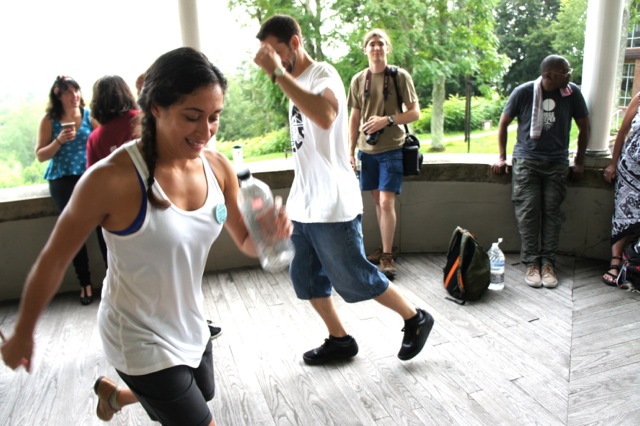
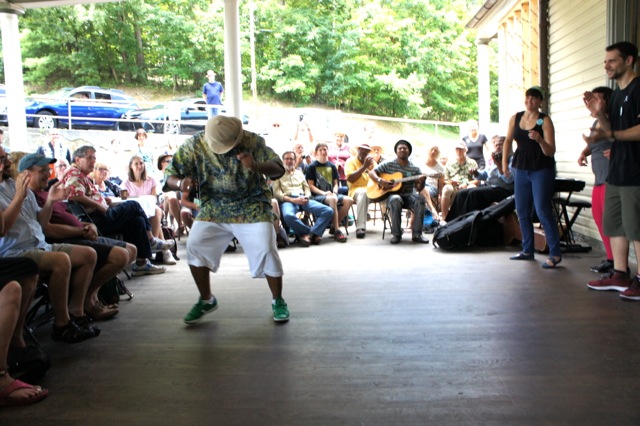
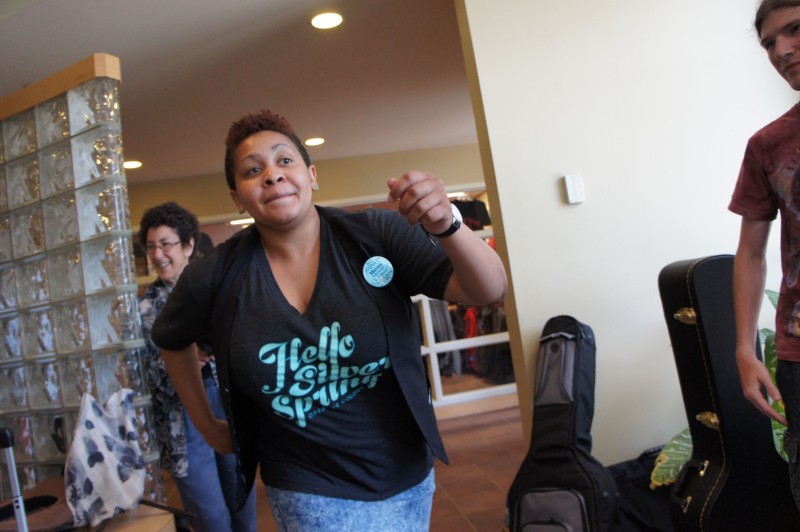
It don’t mean a thing…well, you know
If it ain’t got that swing, and it was, after all Blues & Swing week combined. While this article focuses on the blues portion, there was a fun time over on the swing side and the two halves converged in numerous joint performances. Swing organizer Wendi Bourne invited top-notch musicians.
-
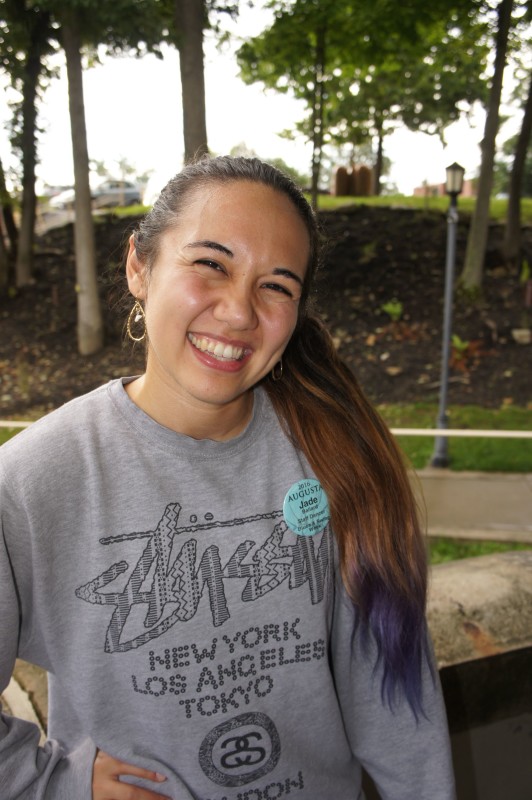
The graceful dancer Jade Ballard infected everybody with her never ending smile 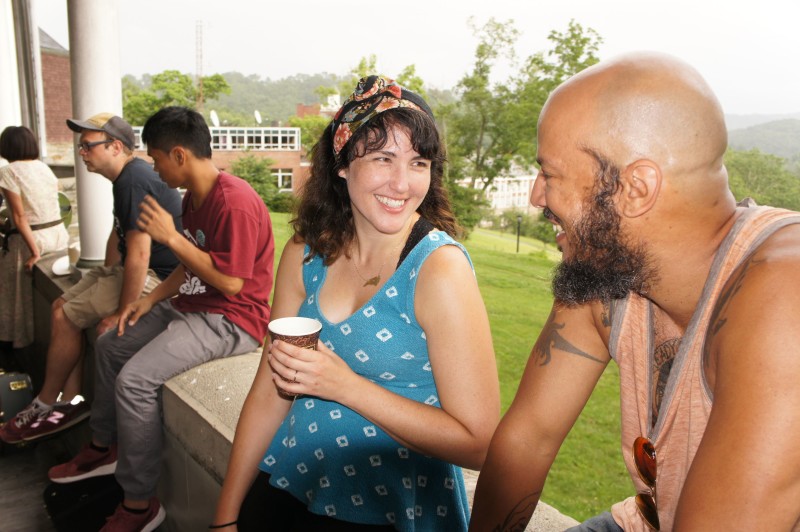
A good time was had by all and many new friendships were formed. 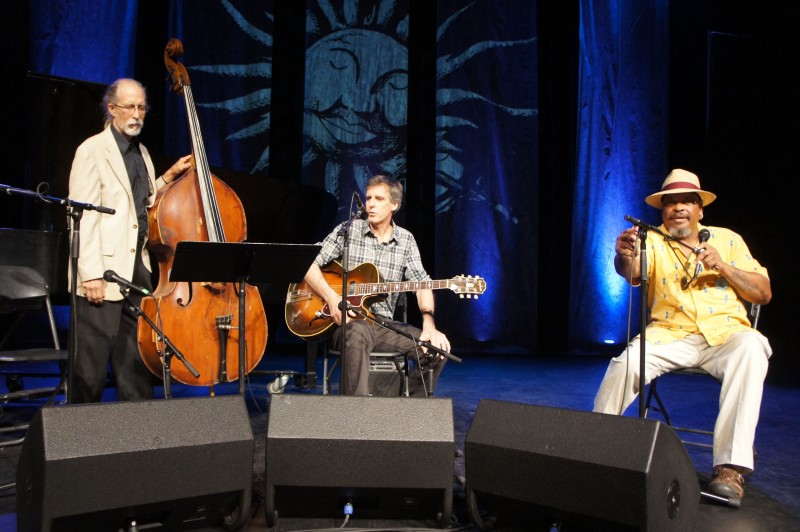
Bassist Ralph Gordon, guitarist Dave Davies and Phil Wiggins joining forces. 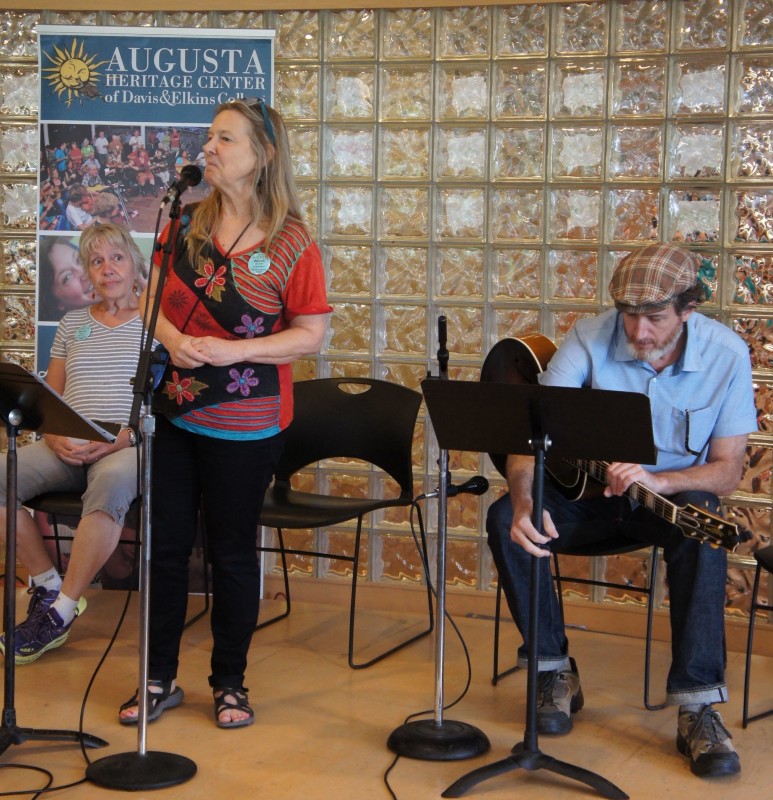
Wendi Bourne did an outstanding job organizing Blues & Swing week. She was a steadfast force behind it all. Here she is with the extraordinary guitarist Matt Munisteri setting up to support singer Rebecca Kilgore. 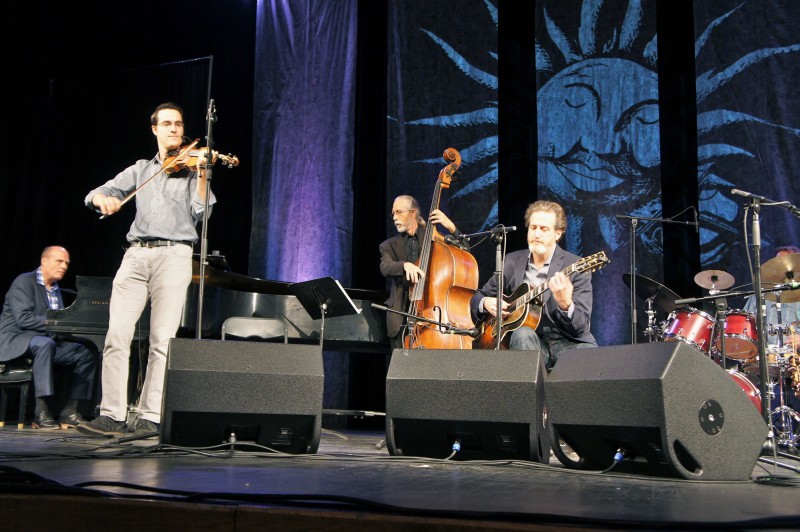
Pianist Robert Redd, Violinist Jason Anick, bassist Ralph Gordon, and guitarist Matt Munisteri swing like mad. 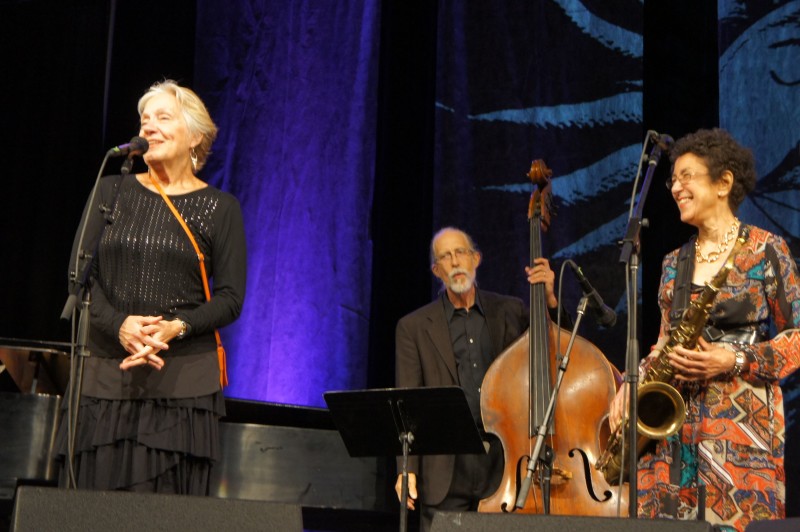
Singer Rebecca Kilgore joined by bassist Ralph Gordon and Carol Sudhalter on sax. 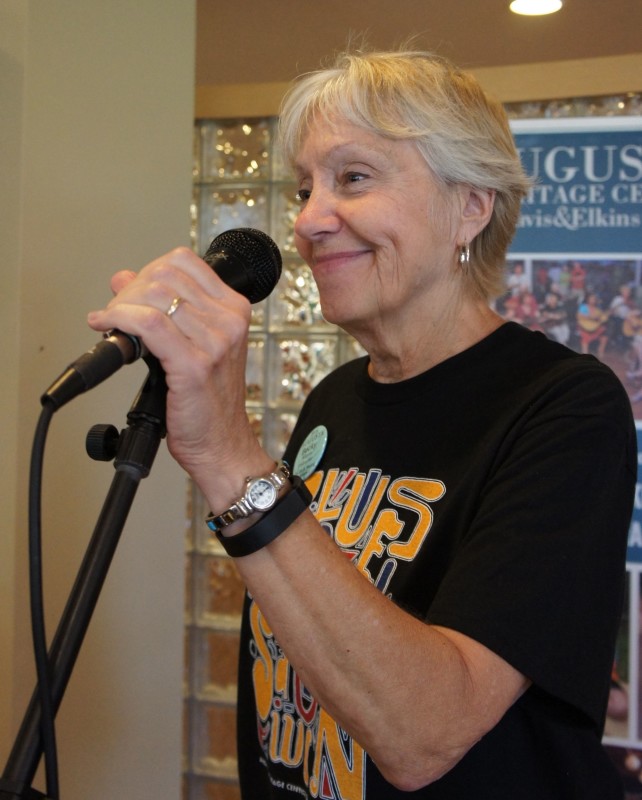
Rebecca Kilgore sang like an angel. 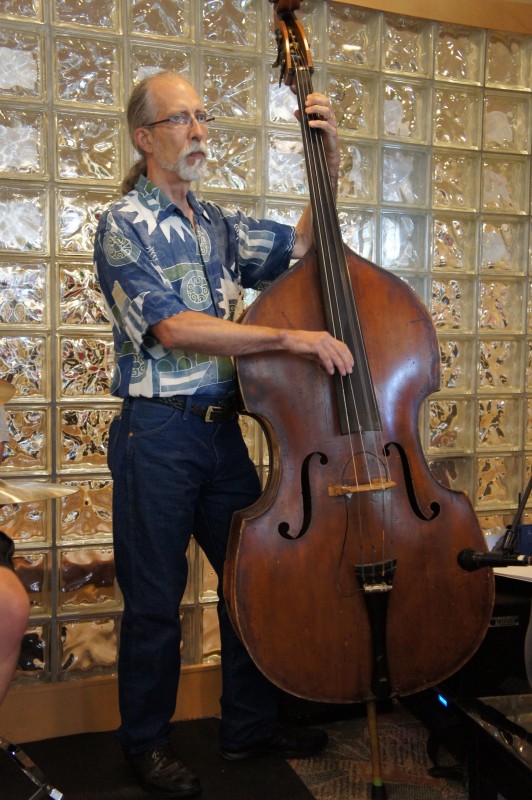
Bassist Ralph Gordon is equally at home in the blues and jazz. 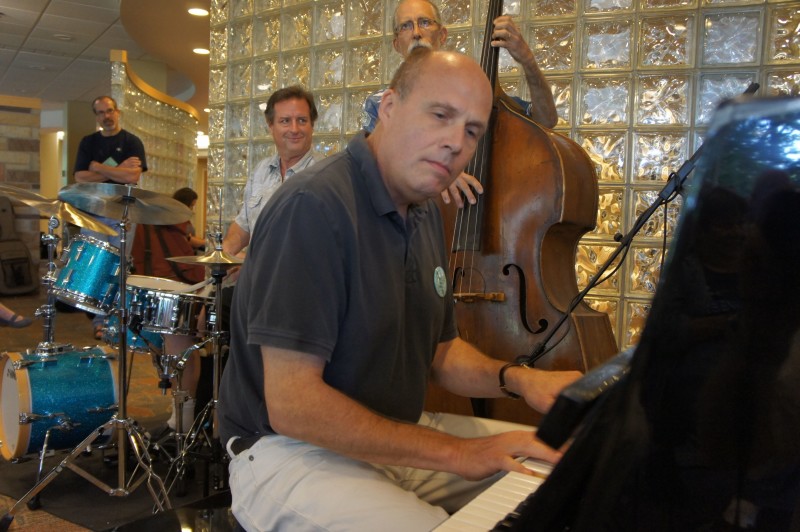
Pianist Robert Redd is a powerhouse. 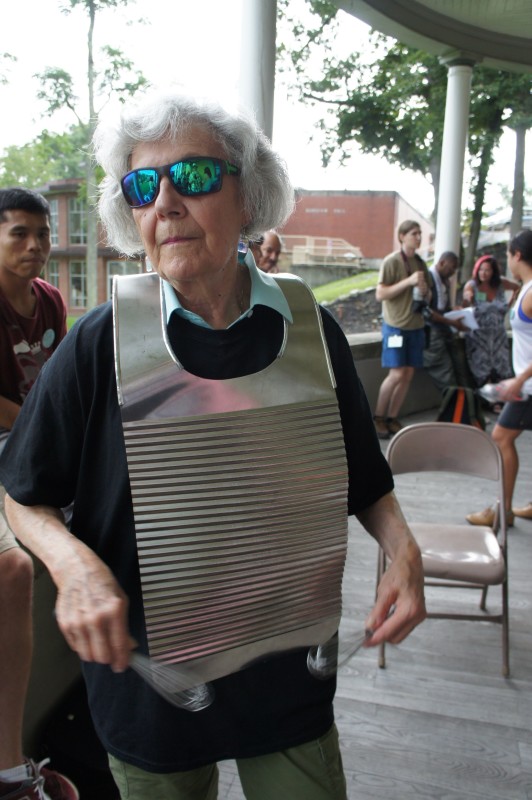
People of all ages sure had fun. _____________________________________________________________
Frank Matheis is a radio producer and music journalist. He is the publisher of thecountryblues.com, a contributing writer to Living Blues and he has published in SingOut!, Blues Access and many other publications. His radio documentaries have aired in the US, Germany and Australia. Photo by: Lisa Emaleh 2016.
